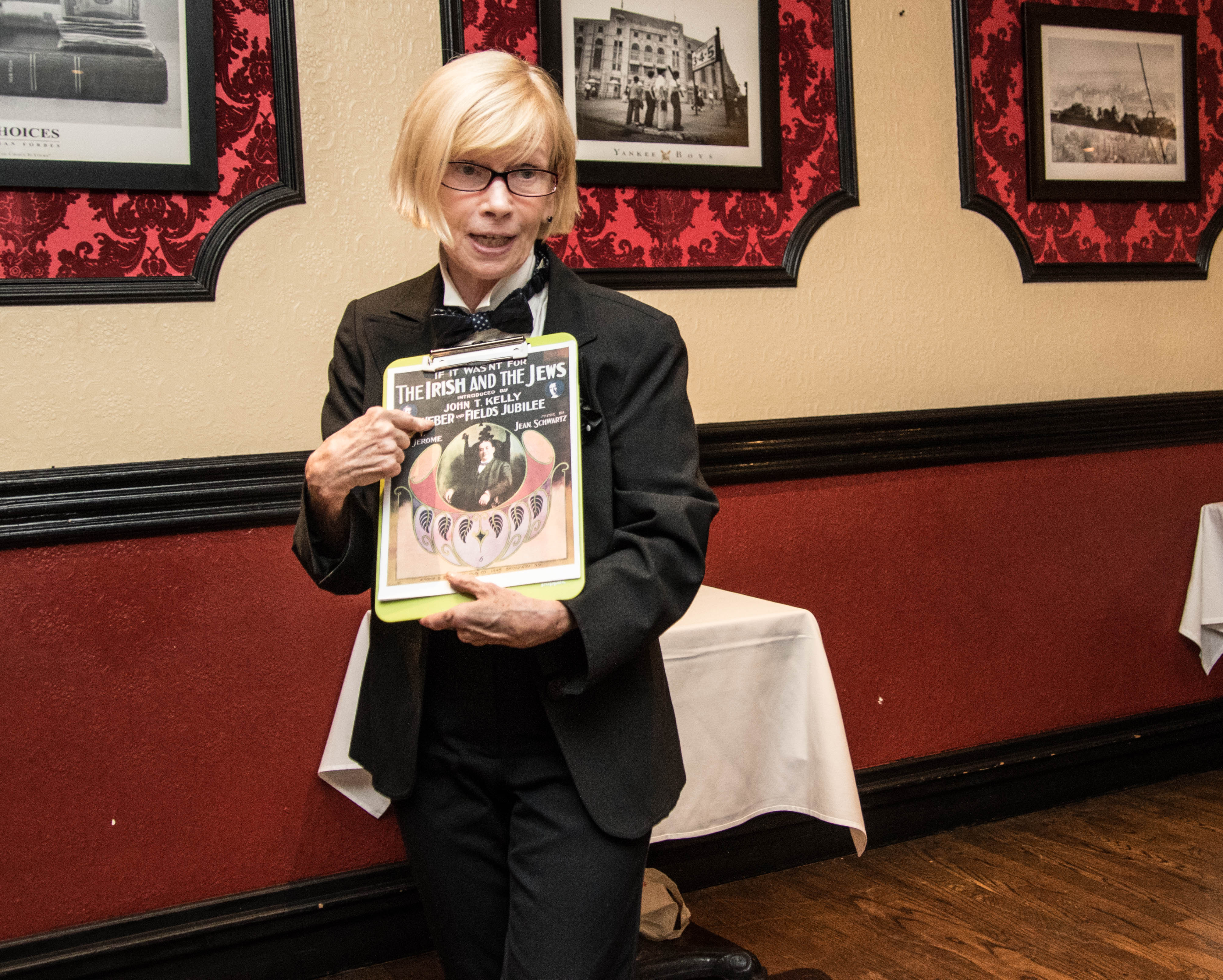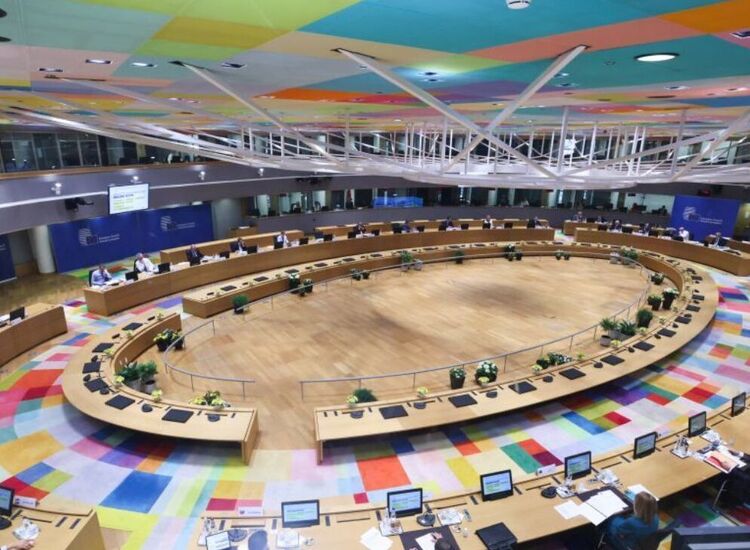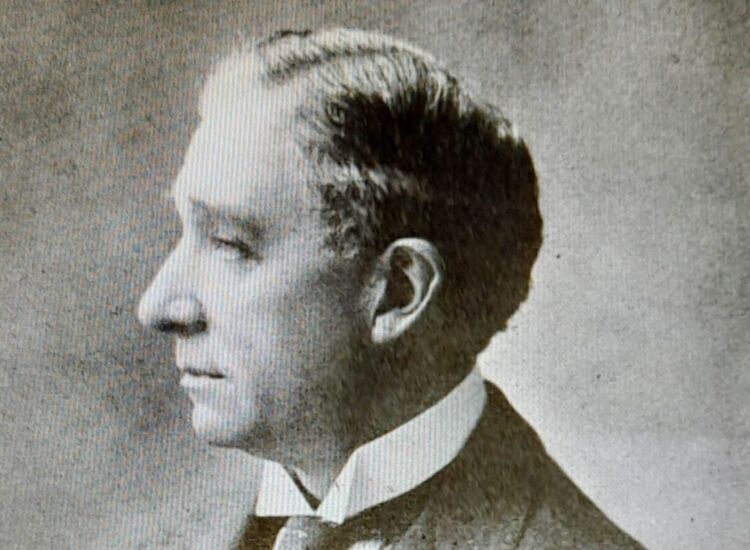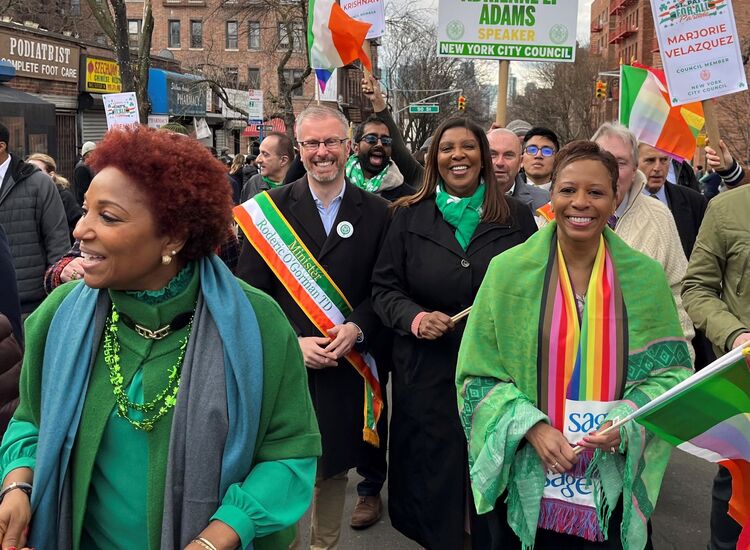The excitement of a restriction-free Halloween in New York City was palpable everywhere on Oct. 31, but you didn’t have to take part in the revived Village Parade to experience the energy. Indeed you might not have noticed the arrival, further uptown, of some 17 celebrants at the storied Playwrights Tavern on West 49th Street – like the spirits they were intending to portray, each wore ordinary street clothes and carried their transformations with them in tote bags, devices and memorized words. These were the participants in an annual Celtic celebration known as Samhain. The beginning of the Celtic New Year, the division between light (summer) and dark (winter), this evening has been celebrated in Ireland for 2,000 years. Bonfires were lit and the ashes scattered on the crops to bring good luck and a good yield in the next year, the dead were remembered and even food cooked for them and shared with the poor. Oct. 31 is the evening when the veil separating this world and the otherworld is thinnest, enabling spirits to pass through. The family’s ancestors were honored and welcomed whereas harmful spirits were deterred. Carved turnips in windows warned off the unwelcome, while disguises kept those venturing outside from harm.
Some members of this Samhain group had been celebrating since the early 1990s, when Maura Mulligan invited her Irish-language and dance students to research a character in Irish mythology or history and appear on Samhain night as a ghost of that person. Food and history were shared and a traditional candlelit “Ceremony of Light,” where recently passed family and friends were remembered, graced the finish. Now organized by the “Nollaig Na mBan” women who have been celebrating the four Celtic “fire festivals”; Imbolg, Bealtaine, Lughnasa and Samhain since 2016, the event has survived lockdowns and bad weather to welcome this year as a memorial to the great Dr. Mick Moloney, musician and champion of Irish history and culture. Donations were encouraged to benefit efforts to alleviate the needs of refugees and others affected by the war in Ukraine, this has been the charity focus supported by attendees of recent fire festivals. Each “spirit” participant presented a song from Mick’s vast repertoire, with costume, props, song and dance. Each year we feel fortunate to have the multitalented Dan Brown appear as the ‘camera spirit’, capturing the essence of every performer.
Seated in a lovely decorated room reserved for us by the terrific Tavern staff, with the “Brendan Behan” menu beside us and the energetic and spirited Ukrainian-born Masha serving, the celebration was launched. Maura Mulligan, recently returned from two of Mick Moloney’s music tours – one in Northern Ireland and the other in Galicia, Spain – reminded us that the roots and shared history of different cultures have so much to teach us. Between courses the “spirits” appeared, beginning with Mary McIntyre who challenged us to guess the title of her song. No one managed to answer “Mother Malone” but given the prolific repertoire of Mick Moloney, it was understandable. Sheila Houlihan recited the words of “Miss Fogarty’s Christmas Cake,” written in 1883 by the Tin Pan Alley aficionado Frank Horn. Dee Nolan, sporting a green mask, followed appetizers with a beautiful rendition of “Green Grows the Laurel,” the group joining in the chorus. The devotion this abandoned woman has for her lover was heartfelt. Masks were the highlight of Mary Fee’s costume as she played a recording of “Pigeon on the Gate,” and Bonfire Witch Pat Mangan jig danced to “The Geese in the Bog.”
Delicious entrees were enjoyed, followed by Nancy Oda’s playing “Safe in the Harbor” by Eric Bogle. Nancy reminded us that Covid taught us to reevaluate death, not as an end but as a transition to another part of the cosmos. Tami Ellen McLaughlin recalled the well-known Niall O’Leary dancing in the street as Mick Moloney performed, while this writer played the unfamiliar “My Dad’s Dinner Pail,” describing the nested portable food container used by Irish workers, and common in American families where families worked long hours in field, factory and mill. Elizabeth Lenihan remembered the underappreciated Irish migrant workers in England. Mick Moloney was a construction worker himself in 1964, an experience reflected in his rendition of “Murphy Can Never Go Home,” premiering at the Irish Arts Center. Maura Mulligan, in Spanish dress, taught us the chorus of “Tuirne Mhaire,” about an Irish girl neglecting her spinning wheel, uniquely made with its legs fashioned in London and in Spain. Mick’s last Galician music tour featured singers who taught Spanish and Galician choruses to the audience. This song reminds us of the way Mick valued the multicultural roots of music. Karen Daly, displaying the original 1912 performance cover, reminded us of the show song “If it wasn’t for the Irish and the Jews,” and Mick’s Smithsonian lectures about the collaboration between these two ethnic groups. Karen represented the German-Jewish immigrant Nathan Strauss, founder of Macy’s and a great philanthropist and social activist.
Mary Fee shared her traditional “Bairin Breac” loaf, in which a ring and a nut were hidden. Dee Nolan found the ring, signifying an engagement in the New Year, while Tami Ellen McLaughlin found the nut, for wisdom. This is always a fun and delicious activity and it almost diverted us from dessert.
Laura O’Keefe taught us a “call and response” to an appropriately gory “Weela Wella Walya,” complete with bloodied knife, and we ended with Henrietta Blyden celebrating the outsize influence of singer Jim Reeves with a 1986 recording of “Ten Kola Nuts” sung by the Guinean Mory Kante and combining Mandingo and jazz music. This combination would have delighted Mick with its melding of African genres.
The brief Ceremony of Lights gave names to those we lost, in addition to the outsize spirit of Mick Moloney. Their energy seemed to surround our candlelit circle. Finally exiting the busy tavern to a crush of revelers, we were as inconspicuous as when we arrived, yet all of us felt richer for the knowledge wrought by sharing words and music. It would not surprise us to even glow a little in the dark, and light our way home.
Nollaig Na mBan NY wishes to help the struggle in Ukraine and asks friends to donate to https://www.veselka.com/support-ukraine/ or Sunflower of Peace Foundation: https://www.facebook.com/sunflowerofpeace.








